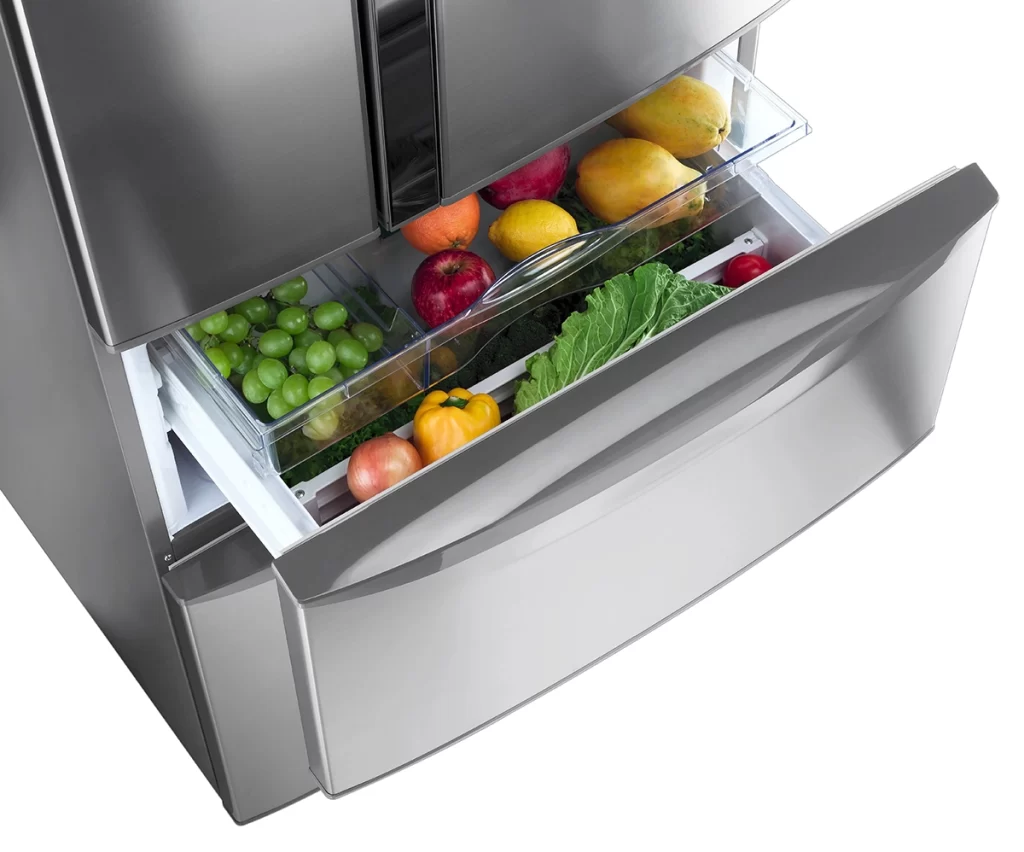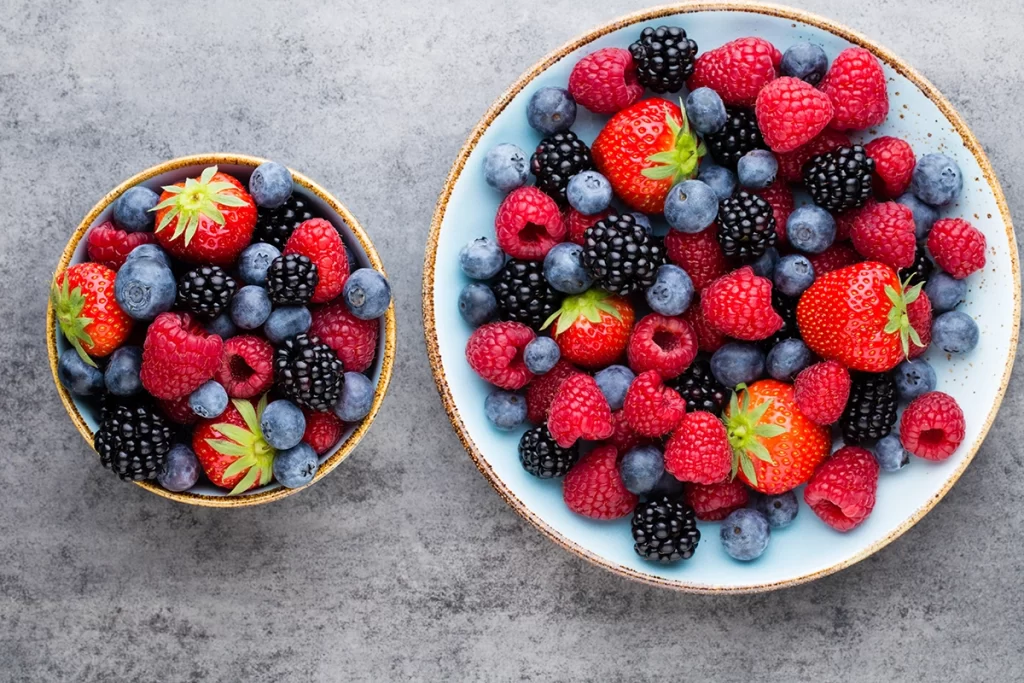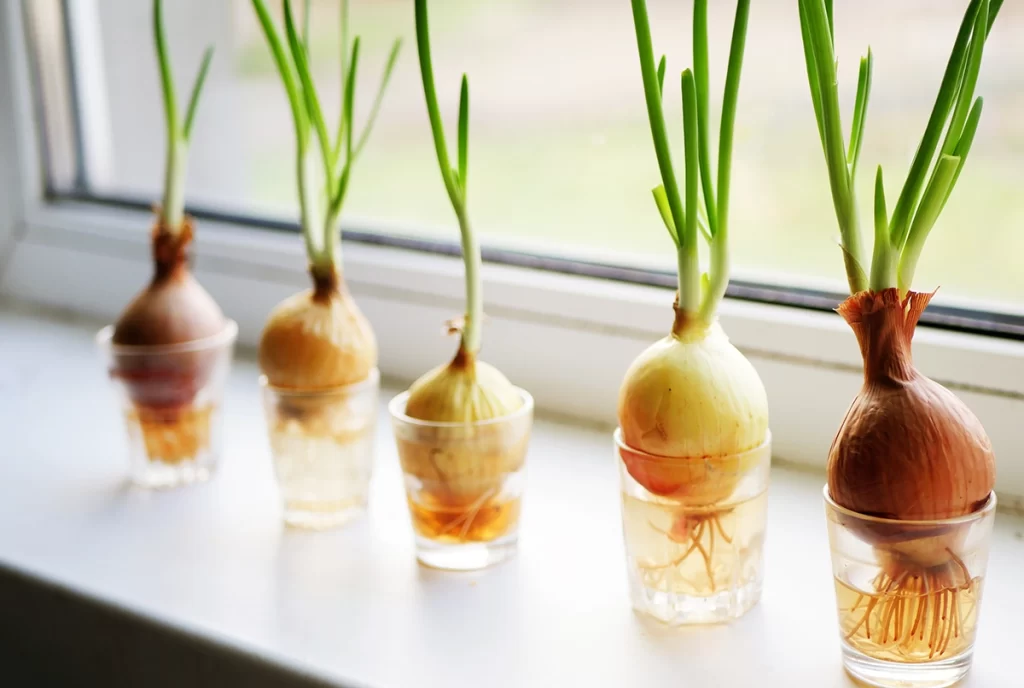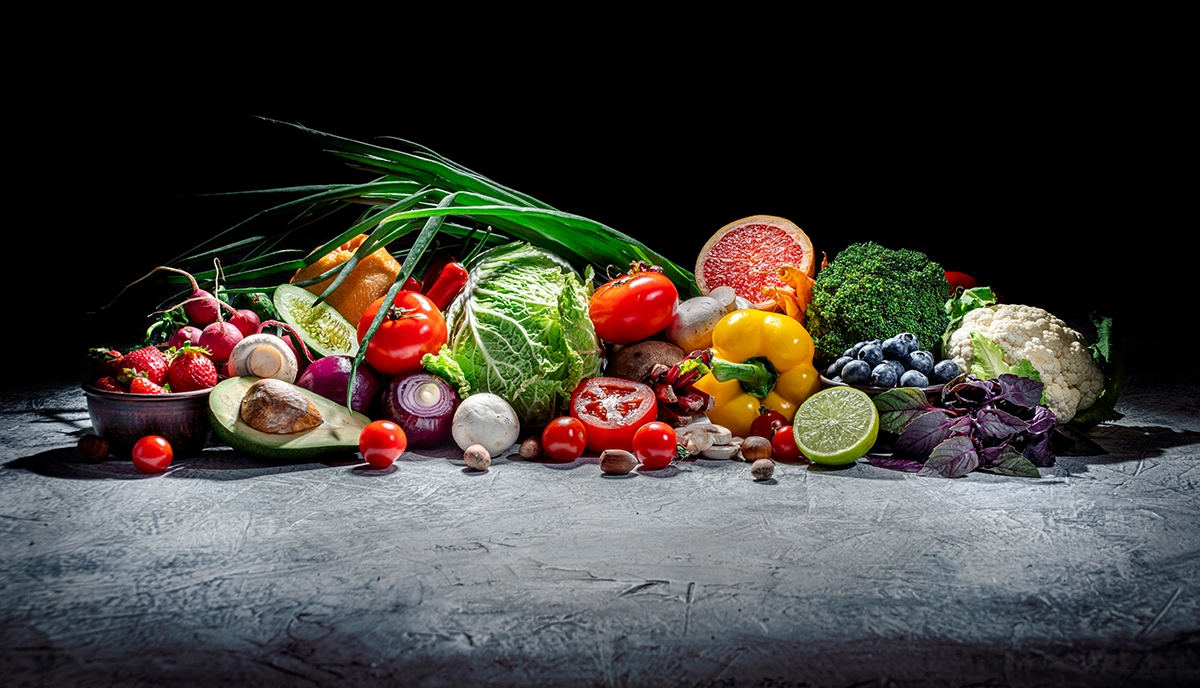15 Storage Tips for Fresh Produce will save you money and keep your family healthier!
In the old days before refrigeration, getting fresh produce to last was a real challenge. Our ancestors used root cellars and other creative methods to preserve foods, but things have gotten a whole lot easier thanks to modern refrigeration. Still, we’ve all experienced the frustration of having fresh fruits and veggies go bad way too quickly. With just a little extra effort and some clever storage techniques, you can keep your fresh goodies crisp and flavorful for much longer. Check out these 15 brilliant tips!

Keeping Fresh Produce Fresher for Longer: 15 Brilliant Hacks
1. Get to Know Your Fridge’s Crisper Drawers
Most fridges have at least one crisper drawer designed for storing fruits and veggies. Look for a humidity control slide that lets you adjust the moisture level for different types of produce. Generally, you’ll want higher humidity for leafy greens and lower humidity for items like mushrooms that can get slimy.
2. Freeze It Fresh
Freezing is a fantastic way to keep produce from going bad. Chop up extras and freeze them on baking sheets, then transfer them to airtight bags or containers. Great for smoothies or cooking later! Berries, bananas, greens, and more freeze beautifully.
3. Green Bags Galore
Those green plastic bags you see in the produce aisle actually do serve a purpose! They regulate airflow to create an optimal micro-environment. Use them for storage, and don’t cram too many items in each one.
4. Paper Towel Trick
Moisture is the enemy of many fruits and veggies. Line storage containers with paper towels to absorb excess moisture and extend freshness. Replace the towels when they get damp.
5. Wrap It Up
Wrapping individual pieces of produce like lettuce, greens, broccoli, or cauliflower in paper towels helps prevent moisture buildup that can accelerate spoilage.

6. Chill Those Berries
Fresh berries can mold rapidly at room temperature. Spread them out on a plate or baking sheet and refrigerate until you’re ready to use them.
7. Divide and Conquer Ethylene
Fruits like apples, bananas, avocados, and tomatoes give off ethylene gas that accelerates ripening. Store them away from ethylene-sensitive veggies like leafy greens, broccoli, and cauliflower.
8. Mind the Temperature
Keeping your fridge set between 35°F and 38°F allows for optimal storage times for most fruits and veggies. Any colder and you risk freezing some items.
9. Give It Some Air
While wrapping helps some produce last longer, others like mushrooms do better with plenty of airflow. Use a breathable container or cloth bag.
10. Go for Glass
If you want to avoid plastic for environmental reasons, glass containers are a fantastic reusable option for storing fruits and veggies.
11. Say No to Moisture
Before refrigerating, make sure to remove any condensation from the produce using a paper towel. That excess moisture is a prime culprit for premature spoilage.

Bonus Tip: Want it at its freshest? Start a window sill garden and harvest as needed!
12. Rotate Your Stock
Using the first in, first out method for your stored produce helps prevent items from getting forgotten in the back of the fridge and rotting away.
13. Use Your Freezer
Can’t eat everything before it goes bad? Blanch veggie extras and freeze for smoothies, stir-fries or soup down the road. Fruit can also be frozen for baking or smoothies.
14. Try Vacuum Sealing
Investing in a vacuum sealer can dramatically extend the fridge life of many fruits and veggies by removing excess air.
15. Check Your Seals
Make sure your fridge door seals are in good condition so cool air isn’t leaking out, causing temperature fluctuations that can hasten spoilage.
By using these brilliant storage tips and tricks, you can cut way down on wasted food and money. With a little extra effort, you’ll get maximum freshness and longevity from all your tasty produce!
Freshness Cheat Sheet:
Apples (3-4 weeks), Berries (3-6 days), Broccoli (3-5 days), Carrots (4-5 weeks), Green Beans (3-5 days), Greens (3-5 days), Mushrooms (4-7 days), Tomatoes (5-7 days)


Keeping It Cool Without the Fridge
While refrigerators are great for extending the life of many fruits and veggies, there are also plenty of hardy produce items that do better stored at room temperature. Having the right storage setup lets you keep these longer outside of the fridge.
Potatoes and Sweet Potatoes
These starchy staples should be stored in a cool, dark, well-ventilated place—definitely not the refrigerator! The cold air can cause them to develop an off-flavor. A paper or mesh bag in your pantry or cellar is ideal for up to 2-3 weeks.
Onions
Like potatoes, onions suffer quality issues when refrigerated. Keep them stored loose or in a mesh bag in a cool, dry location with good air circulation for 1-2 months.
Winter Squash
Thick-skinned squash varieties like butternut, acorn, and spaghetti can last for 1-3 months when stored at room temperature, keeping them from moisture buildup.
Tomatoes
Never refrigerate tomatoes! It makes them mealy and flavorless. For peak taste and texture, keep tomatoes at room temp and use within 5-7 days.
Garlic and Shallots
With their papery outer layers, garlic bulbs, and shallots stay freshest when stored at room temperature in a dry, well-ventilated spot. They can keep for up to 6 months!
It’s all about finding the perfect cool, dry, well-vented spot for your non-fridge produce to thrive. A root cellar or even just a shaded kitchen cabinet can be great options. Storing these items properly means less waste and fresher flavor!
Bonus Tip: Specialty Storage Containers
Don’t forget to check out cool specialty storage containers like Bluapple produce preservers, Foodsaver vacuum sealers, Rubbermaid FreshWorks produce savers with crisp trays, and more! Extending freshness is an environmental win.
In Conclusion, 15 Storage Tips for Fresh Produce
Whether you’re trying to keep your fridge-dwelling fruits and veggies perky or make the most of those hardy room-temperature varieties, having some smart storage strategies in your arsenal can be a real game-changer. Not only does it cut way down on wasted food and money, but it also helps you get the maximum freshness, flavor, and nutrition from all your amazing produce.
We covered a ton of brilliant tips in this article, from harnessing the power of crisper drawers and green bags to the paper towel trick for eliminating moisture buildup. Keeping ethylene-sensitive items separate and monitoring temperature ranges are other crucial components. And don’t forget about fun storage helpers like vacuum sealers or produce-preserving containers!
For fridge-dwellers like berries, leafy greens, and broccoli, a few simple steps like spreading them out, wrapping in paper towels, and using those green bags make all the difference in longevity. With hardier items like potatoes, onions, and winter squash, finding the perfect cool, dry, well-ventilated spot is key to months of freshness.
At the end of the day, it’s all about being a little more mindful and putting in a bit of extra effort on the front end. But wow, do those small steps pay off in big ways! You’ll be able to enjoy fresh, nutritious, delicious produce for weeks or even months longer than if you just tossed it haphazardly in the fridge.
Not only is reducing food waste an amazing way to save money, but it’s also better for the environment. The average American family tosses out an astounding 25% of the food and beverages they buy. Just imagine the environmental impact if we all made our food last just a little bit longer!
With these 15 brilliant hacks, you’re well on your way to reaching pro-level status when it comes to smart, savvy produce storage. Your taste buds, your wallet, and our precious planet will all be thanking you! So embrace these tips and tricks and get ready to seriously step up your fresh food storage game. Your future self will be thrilled with the effort.
So stop tossing out sad, withered fruits and veggies. Get strategic with your storage, and make the most of your fresh, healthy, delicious produce!

Join us on Facebook at Sherry Kay Cooks!
